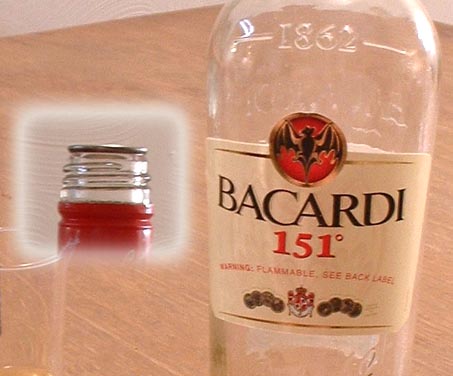
A motto I came up in one tutorial was: "Things are not as complex as they look nor as simple as they look."
We can blame our senses (mostly eyes) for these two misperceptions. As mentioned before, our vision is quite limited, making some items look more complex than they really are and others look simpler than they really are.
Learning chemistry is like getting a boost to all senses, which can help us simplify what we see but also see things at a deeper level.

The movie, Matrix, had a part that really made me think of one goal of chemistry, which is to see the underlying simplicity of our world.
Even though the Matrix was just a computer simulation, humans could not help but perceive the Matrix as reality.
At one point in the movie, Neo started to reject his normal senses and started to take a hard look at what was around him.
What once seemed impossible was possible. What once seemed complex was now simple.
The world of the Matrix was not millions of different items acting in a life-like chaotic manner. No, he could see it's underlying secret. All was made from the same thing, digital signals of a computer program. With this knowledge, his perceptions became accurate and he gained control of that world.
I see the task of learning chemistry very similar to Neo's challenge. We can't look at the world the same as we did before. We have to see the simplicity and complexity beyond what the eyes normally see. Only then can we see the world in a way that lets us understand and control it.
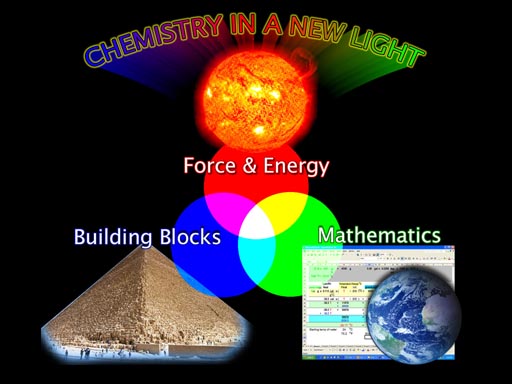
One tool for seeing our world is to see it in terms of building blocks, force & energy, and math.

Regarding building blocks, we know they build compounds that are often categorized as either inorganic or organic. Oxygen is the primary building block for most inorganic compounds. For organic compounds, carbon rules that domain.
For inorganic, let's concentrate on the 3 most abundance elements in the Earth's crust (the soil). Those are oxygen, silicon, and aluminum. For organic, let's concentrate on the carbon, hydrogen, oxygen, and nitrogen.
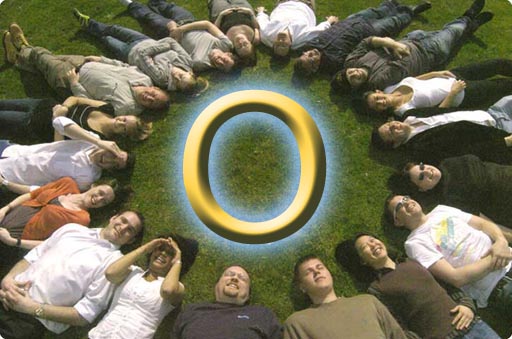
As mentioned, a goal I have for students in this class is to look at the world differently and to find simple connections. For example, where do you see oxygen? The sky you see and the air you breath has oxygen. Your body is 60% oxygen*. The soil underneath you is 60% oxygen*, and the grass you feel is about 60% oxygen*. Air, body, plants, and soil are all connected through this one element.
(* % is by weight)
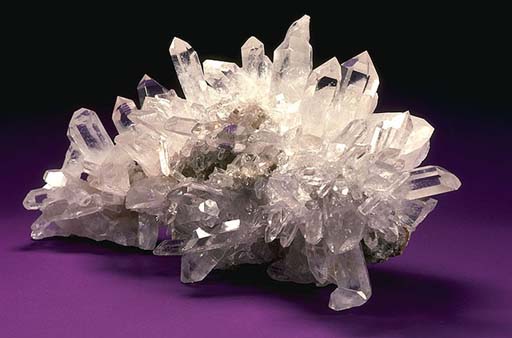
Building Blocks: Quartz
Problem 1: Quartz is a common mineral because it contains two of the most common elements in the Earth's crust. What are those two elements?
Problem 2: What percent (by weight) of the Earth's crust are each of those two elements? (See Building Block Inorganic Compound tutorial or other sources)

Building Blocks: Glass
The main ingredients of glass are SiO2 (74% w/w), Na2CO3,
and CaO with some MgO and Al2O3 added for chemical resistance.
Problem 3: What element is in common with all of these compounds?
Problem 4: What two elements are most abundant in the stone wall? (assume stone is like Earth's crust).
Problem 5: Glass and stone look very different but what do they have in common?

Building Blocks: Oxygen
Problem 6: The walls in this room are made from drywall which is gypsum. What is the compound (mineral) that is gypsum?
Problem 7: What two elements in gypsum are also in the ingredients of the glass window?

Building Blocks: Aluminum
Aluminum metal "rusts" almost instantly. Fortunately, this "rust" creates a layer on the surface and protects it from further damage to oxygen.
The main ingredient in sapphires and rubies
is aluminum oxide. A vendor of aluminum pots and pans claims their pots
and pans are coated with a thin layer of sapphires and rubies giving it
superior durability.
Problem 8:
How much of that claim is true?

Building Blocks: Aluminum
These gems are made from the same thing
that sandpaper is usually made from, which is corundum.
Problem 9: What is the formula for corundum?
Problem 10: What quality of corundum makes it good for use in sandpaper and good as a gemstone?
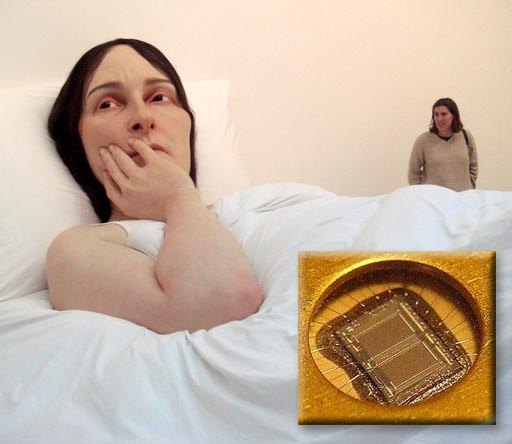
Building Blocks: Silicone vs. Silicon
These two words are often confused. One is used to make computer chips and the other is used as a rubbery glue or as a material for making bigger than life molds like in this picture.
Problem 11: Which substance made this sculpture and which made the computer chip?
For more interesting pictures from this sculptor (Ron Mueck), go to www.flickr.com and do a search for "mueck".
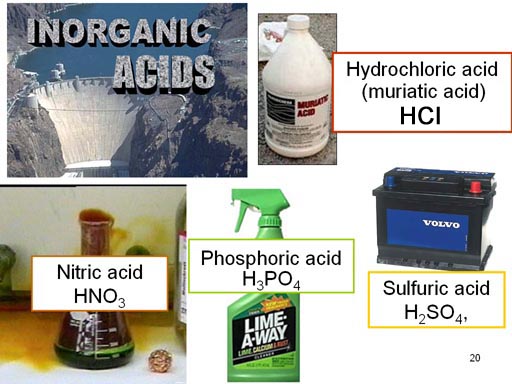
Building Blocks: Acids
Problem 12: Which element is in all of these inorganic acids?
Extra Credit: Phosphoric acid is added to many soft drinks for taste purposes. What does it do to the taste?
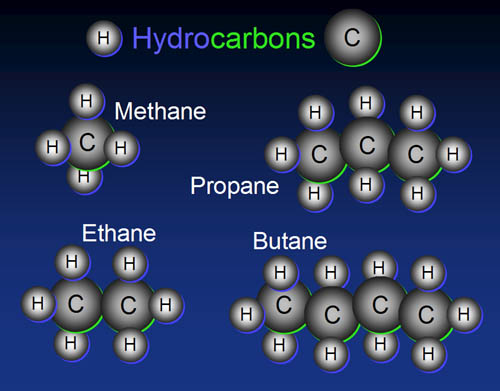
Building Blocks: Hydrocarbons
In the organic world, carbon rules. The simplest
organic compounds have just carbon and hydrogen. Carbon atom chain together
nicely to make whatever length you want from two to two million.
Problem 13: Which of these hydrocarbons is the main ingredient of natural gas?
Problem 14: Which one is normally put into tanks for barbecues or RVs?
Problem 15: Which one is called "lighter fluid"?
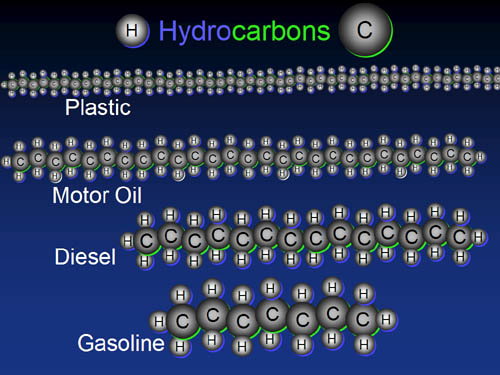
Building Blocks: Hydrocarbons
As the chains get longer, the hydrocarbons go from a gas to a liquid to a more viscous liquid, and finally a solid. The longest chains are polyethylene plastic.
Problem 16: If the
average length of polyethylene molecule is 1,000,000 carbons long, how
many gasoline molecules could you make from just one polyethylene molecule?
(assume gasoline averages 7 carbons long)
It makes you wonder why all this waste plastic isn't being turned in to
gasoline.
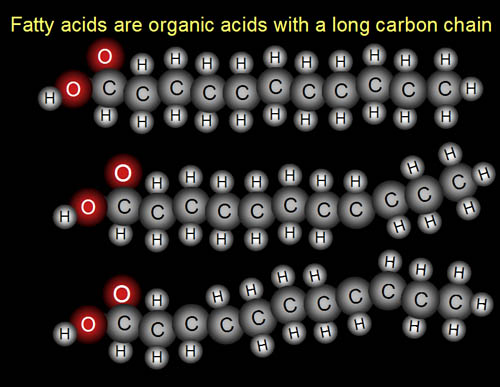
Building Blocks: C,H,O (fatty acids)
Here are three fatty acids.
Problem 17: What part of the fatty acid molecule is the "fatty" part and which part is the "acid" part?

Building Blocks: C,H,O (triglycerides)
When 3 fatty acids are connected to one glycerin
molecule (also called glycerol), you get a triglyceride. Animal fats and
vegetable oils are all triglycerides.
Problem 18: When the fatty acids connect to the glycerin, what compound is released?
Problem 19: Notice the bottom two fatty acid chains have a few carbon atoms with only one hydrogen attached. All the carbon atoms in the top chain have 2 hydrogen atoms. Is the top chain a saturated fatty acid or an unsaturated fatty acid?

Building Blocks: (C,O,H) Carbohydrates
Problem 20:
One of these is the building block for the other three. Which one is the
building block?
Problem 21: What 3 elements are the building blocks for all of these?
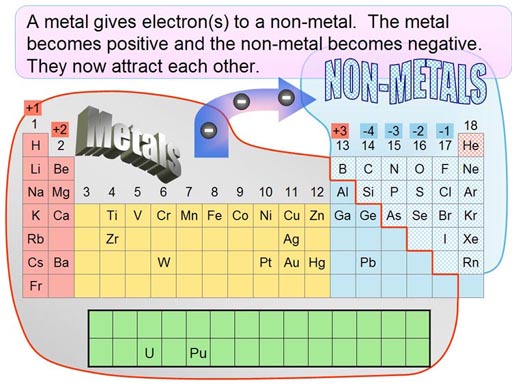
Force & Energy: Electronegativity
Electronegativity is a measurement of how much an element
pulls on electrons. Elements in groups (column) 16 & 17 have the highest
electronegativity (pull the hardest on electrons). Elements in groups
1 & 2 have lowest electronegativity. So that's why they give their
electrons to those non-metals in groups 14 through 17 (especially the
last two groups).
Problem 22:
When hydrogen and oxygen bond (share electrons), which element will pull
the hardest on the shared electrons?
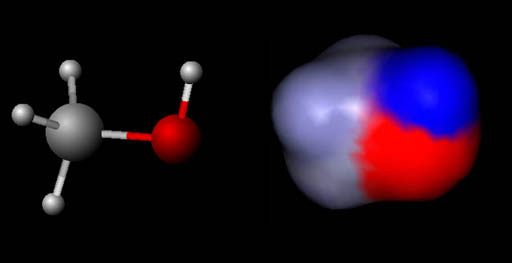
Force & Energy: Charges (methanol)
On the left is the ball-and-stick model for methanol. On the right is
a map of the charges on the methanol molecule. Blue means that region
is positive and red means the region is negative.
Problem 23:
Is methanol a polar or non-polar molecule?
Problem 24:
On the right image, which atom is in the negative region?
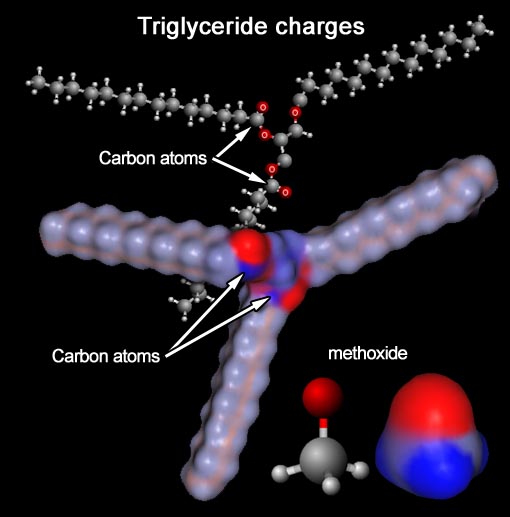
Force & Energy: Charges (triglyceride)
In the back is a ball-and-stick model for a triglyceride (fat or vegetable
oil). In the front is a map of the charges on the same triglyceride molecule.
Notice the arrows point to two of the three carbon atoms that sit between
two oxygen atoms.
In the front model showing charges, the arrows point to
two blue regions which are those same two
carbon atoms. In the bottom right is the methoxide ion (methanol that
had the hydrogen's nucleus removed). The methoxide is going to attack
those carbon atoms and break up the triglyceride and make biodiesel.
Problem 25: What end of methoxide is going to
be attracted to the blue carbon atoms, the oxygen end (red) or the methyl
end (carbon and 3 hydrogen atoms)?

Force & Energy: Charges (biodiesel)
Here's a molecule of biodiesel. It's like a fatty acid,
except the OH (hydroxyl) group has been substituted with a methoxyl (CH3O)
group. The top molecule shows the charges on the biodiesel. Red means
negative and blue means positive. The carbon that sits between the two
oxygen atoms is positive:
Problem 26: Why is that?
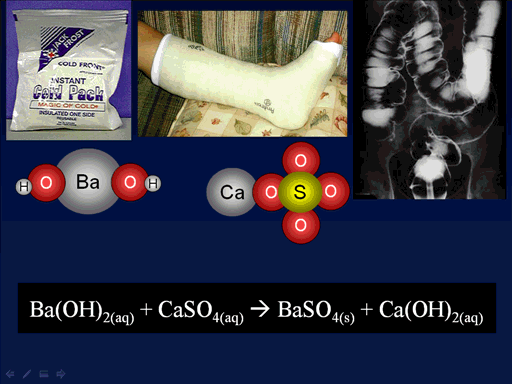
Force & Energy: Charges
Problem 27: What is the charge of the barium ion?
Problem 28: What is the charge on the calcium ion?
Problem 29: What is the charge on the sulfate ion?
Problem 30: What kind of reaction is this called?

Force & Energy: Pressure (force)
Gunpowder is made from potassium nitrate, charcoal (carbon), and sulfur.
Here's the balanced chemical equation.
10KNO3(s) + 3S(s) + 8C(s)
-> 2K2CO3(s) + 3K2SO4(s)
+ 6CO2(g) + 5N2(g).
Problem 31: When gunpowder is used to fire a cannonball, which of the products in the equation is pushing the cannonball out of the barrel?

Force & Energy:
The Space Shuttle lifts off with 2 solid propellant booster rockers and three thrusters on the shuttle getting liquid hydrogen and liquid oxygen from the large external tank. Here's the equation for the burning of hydrogen.
2H2(l) + O2(l) -> 2H2O(g)
To see where the energy is coming from let's look at the electrons.
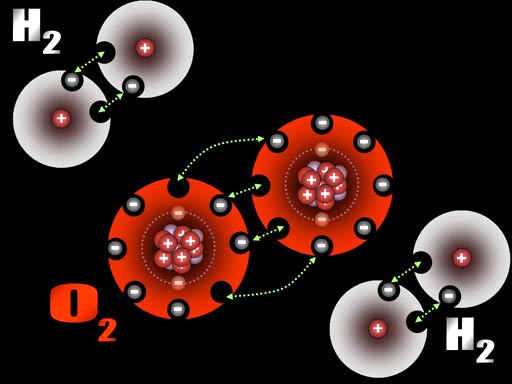
Force & Energy: Charges
Here is hydrogen and oxygen before reacting. The hydrogen
atoms are sharing one electron each and the oxygen atoms are sharing two
electrons each.
Problem 32: Which has a stronger pull on electrons, hydrogen or oxygen?
Problem 33: Which would have a stronger pull on an electron, one proton or 8 protons?
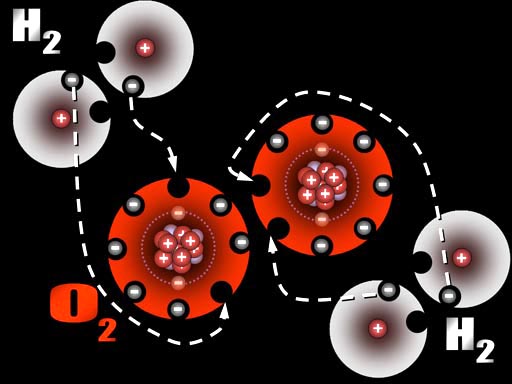
Force & Energy: Energy
After a spark gets a few hydrogen and oxygen atoms to break
apart, the electrons on the hydrogen feel the strong pull of the oxygen
atom's nucleus.
When hydrogen's electrons fall into oxygen's vacancies, it's like balls falling from a high altitude to a lower altitude. All of that energy of the fall has to go somewhere.
Problem 34: Any guess as to what that energy turns into?

Force & Energy: Energy
The energy released as electrons shift from hydrogen to
oxygen helps power the Space Shuttle into space.
Now TV commercials are introducing cars that run off of
hydrogen, but to get hydrogen to put into the car's tank, they will have
to start off with water and break it apart into hydrogen and oxygen.
2H2O -> 2H2 + O2
Problem 35: If 2H2
+ O2 -> 2H2O releases a lot of energy, what can you say about the energy
requirements of the reverse reaction?
2H2O -> 2H2 + O2
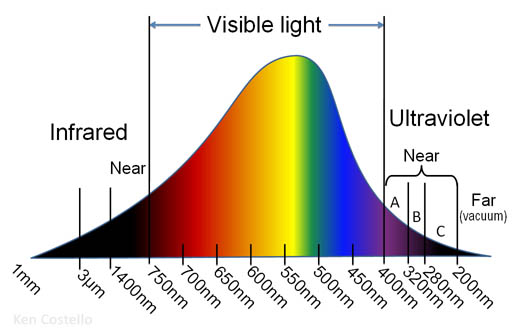
Force & Energy: Light
This is the spectra for sunlight.
Problem 36: The sun produces much more visible light than UV light, so why do sunblock (sunscreens) advertise UV protection rather than visible light protection?
Extra credit: For UV, the graph uses the words "near" and "far". Why is it called "near" and "far"?

Earth's gravity pulls everything towards it. A helium balloon floating in space coming under the influence of Earth's gravity would fall towards Earth just as fast as a meteor.
The only reason some items float or move upwards is because it is surrounded by a gas or liquid that is more dense than it is. In other words, a helium balloon only floats because if it is surrounded by air or liquid more dense than itself. For example, a big brick made of lead will float in a bowl of mercury because mercury is more dense.

Math:
The Titanic floated on water because of gravity (water being pulled down pushed the ship up) but also sank because of gravity (Titanic became more dense than water). In other words, its average density started off less than water (1 gram per mL) to something more than 1 gram per ml Remember g per ml, g per cc, g/cc, g/cm3, and g•cm-3 are all the same.
Problem 36: Look up and report the density of iron in grams per cubic centimeter (or ml)
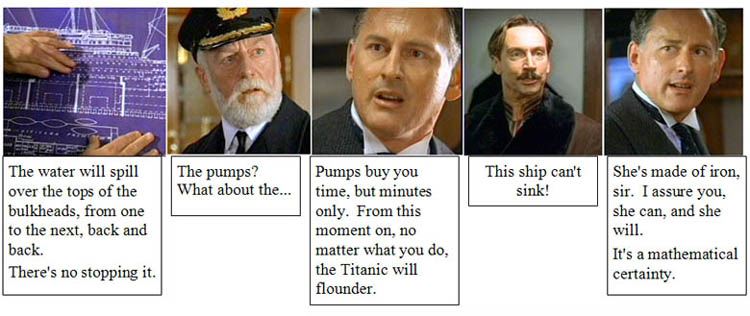
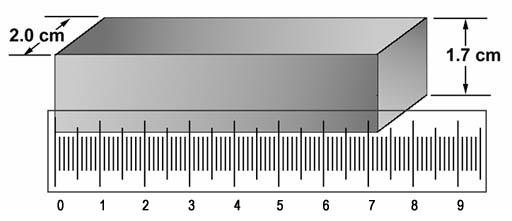
Volume =L x W x H. This bar was weighed and found to be 192 grams.
Problem 37: What is the density of iron in grams per cubic centimeter according to the picture?
Problem 38: If this bar were made of sodium, its weight would only be 23.7 grams. What is the density of sodium if the same size as our iron bar? (g/cm3?
Problem 39: According to the density of sodium, would a ship made of sodium sink even if flooded with water?
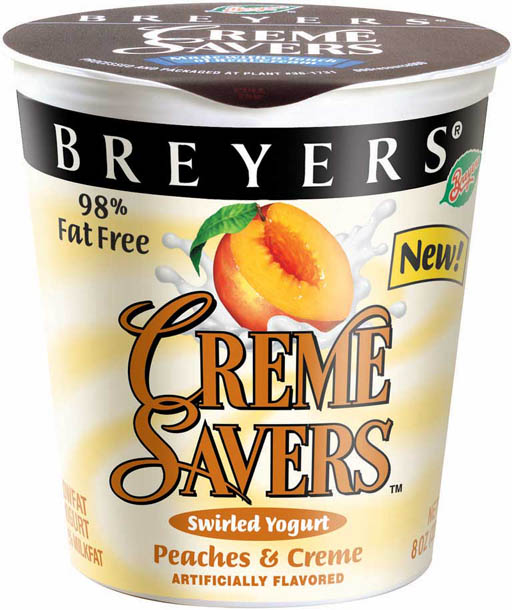
Math: Calories
When you are on a diet, you are told to count fat calories, so you look for food that is low in fat. Unfortunately, a lot of food that is low on fat doesn't say how much fat it contains, but how fat free it is. This container says that it is 98% fat free. At the bottom right you see it is 8 oz. This is ambiguous. Is it fluid ounces (volume) or weight ounces (mass)? Let's say it is 8 oz. of weight. There's 28.3 grams per oz and there's 9 food calories for each gram of fat. How many fat calories are in this container of yogurt?
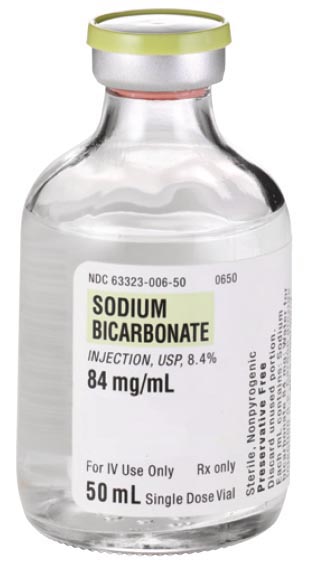
Math: Concentration
This dose of sodium bicarbonate shows concentration
in two ways; 8.4% and as 84mg/ml
84mg x 100 x 0.001= 8.4 g
ml 100 m 100mL
Problem 40: What does the "%" above stand for?
Problem 41: How many grams of sodium bicarbonate is in this bottle?
Problem 42: What is the formula for sodium bicarbonate?
Extra credit: Sodium bicarbonate is often used in baking, but this is for injection. Why do they inject people with sodium bicarbonate?
Math:
Here's a bottle of Bacardi 151. Notice the flammable warning.
The top of the bottle as a metal flame arrestor (probably a wire mesh).
This prevents a flame from going down into the bottle.
Problem 43: What percent of alcohol is 151 proof?
Extra credit: Your friends are smokers and you don't want them to catch their drink on fire, so how much water do you need to add to one liter of Bacardi 151 so that it is 99 proof? (Alcohol does not burn under 100 proof) Give answer in liters or milliliters.
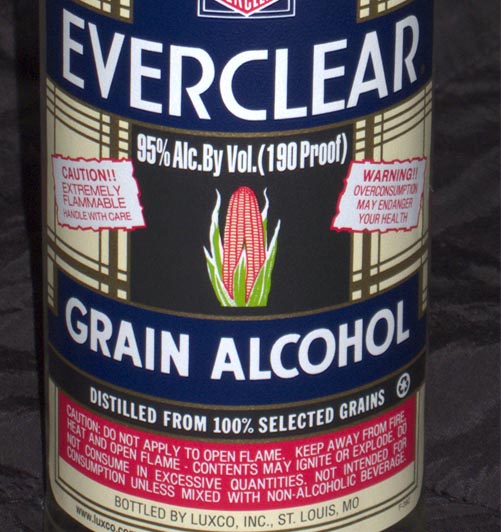
Math:
While we are on the subject of alcohol, here's something
even stronger than Bacardi 151. Notice all the flammable warnings.
Here's the unbalanced combustion equation for ethanol:
CH3CH2OH + O2 -> CO2 + H2O
Ethanol is could be written as C2H6O.
Problem 44: Write the balanced equation
Problem 45: What's the chemistry name for "grain alcohol"?
Extra credit: There's a picture of an ear of corn on the bottle. Why is that there?

Math: pH
Problem 46: Stomach
acid has a pH of about 1. What is the moles per liter of H+ ions?
Pure water isn't all H2O. A certain number of water molecules disassociate into H+ and OH-. The pH of pure water is 7.
Problem 47: How many moles per liter (M) of H+ ions are in pure water?
Extra credit: How many OH- ions are present in pure water, which is pH 7?
Extra credit: The rainbow-like colors shown are those of red cabbage at those different pH levels. What pigment in red cabbage is causing that color change?

Math: Scientific Skepticism
Here is an ice cream that is pushing its Carb Smart ingredients. With
5 grams of sugar, it's about 1/4 of the normal ice cream bar only has
3% of the recommended Daily Value. So a person could eat 33 of these ice
cream bars and still be under 100% of the Daily Value for carbohydrates.
Problem 48: However,
at what % of Daily Value for saturated fat would they be with 33
ice cream bars?
(Carb smart but no fat smart)
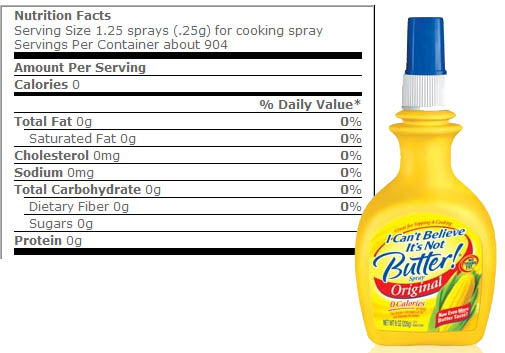
It appears that there's nothing in this product because calories and all Daily Values are zero. Some people mistakenly use a lot of this product thinking it has no fat or calories. Products can show no fat (0%) if there's less than 0.5 grams per serving. Here the serving size is only 0.25 grams, so there can never be 0.5 grams of fat. That also explains why everything is zero.
The actual ingredient is mostly soybean oil. Oils like fats are about 9 calories per gram. Use the "servings per container and the 0.25 grams per serving to calculate total grams. Problem 49: Calculate the total calories of soy bean oil in the container.
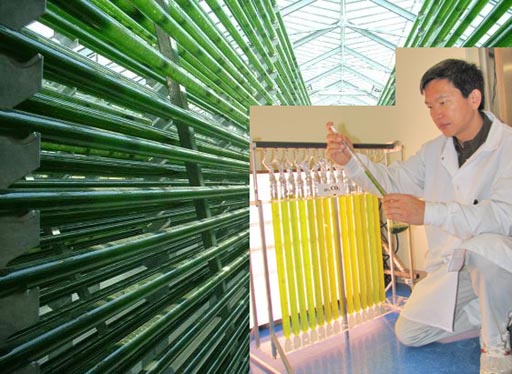
ASU researchers Qiang Hu and Milton Sommerfeld are shedding a whole new light on the algae in the Laboratory for Algae Research & Biotechnology (LARB) at the Polytechnic campus.
I got a tour of the lab in April and have been keeping tabs on this very promising resource for biodiesel, bio-jet fuel, bio-gasoline, alcohol, and food.

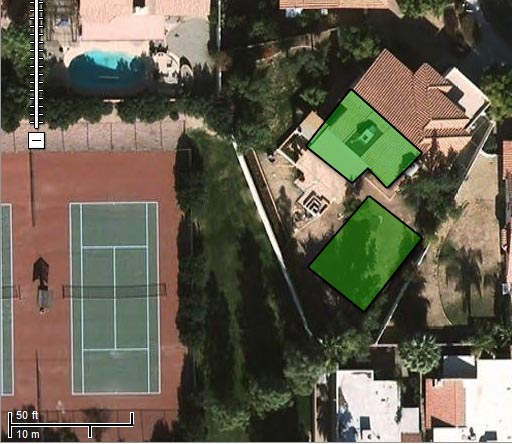
Math:
Here is an aerial view
(Google Maps) of where I live. The green areas are places on the roof
and in the backyard where I could grow algae. I estimate about 1800 sq.
feet is available.
Problem 50: If one acre is 43560 sq. feet, how many gallons of oil could I produce in a year if my yield is also 8,000 gallons per acre?
Extra Credit: It may cost $1 a gallon to make the algae oil and bout $1 a gallon to convert the algae oil to biodiesel. Diesel is now at $4 a gallon. How much money would my yield of algae save me?
Congratulations on getting through the Written Final for CHM130. Send your answers to costello130@chemistryland.com. Use subject line of "Written Final"
